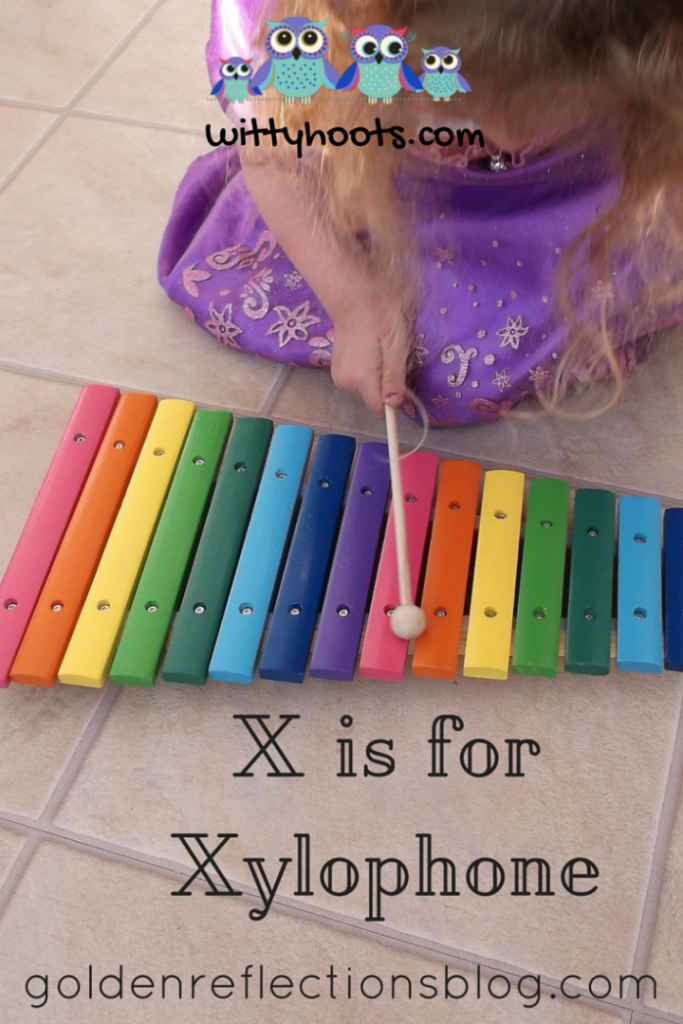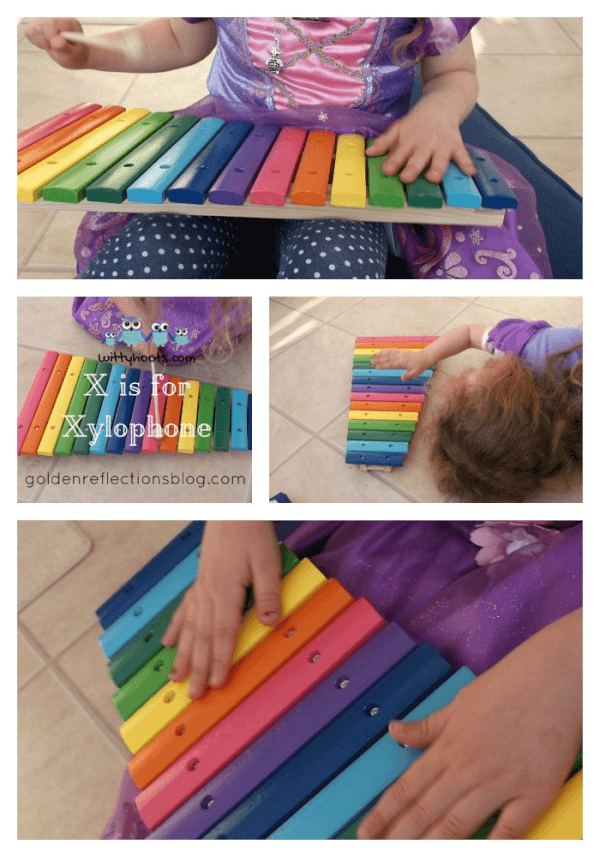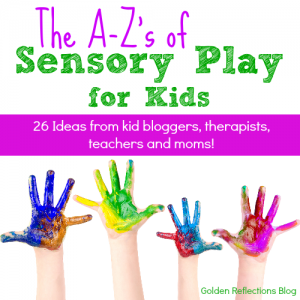X is for Xylophone Sensory Play
Affiliate and Referral links are used below to promote products I love and recommend. I receive a commission on any purchases made through these links. Please see my disclosure policy for more details. As an Amazon Associate, I earn from qualifying purchases.
Today we have Helen of Witty Hoots sharing with you all for the A-Z's of Sensory Play for Kids series. She has some great ideas for Xylophone sensory play!
We are exploring X is for Xylophone and how this instrument can be used as part of sensory play. The beauty of a xylophone is that not only is it an instrument that can be heard but it can also make vibrations that can be felt on the skin too.
Xylophones and Similar instruments
Xylophones tend to be made from wood. Each bar is a different length to create a different sound. Shorter lengths have a higher pitch ad longer lengths have a lower pitch. There are all sorts of different types of xylophone that have developed throughout the world. Plus instruments such as the Marimba that look very similar to a xylophone. Metal ‘xylophones’ tend to be classed as glockenspiels and are tuned differently.
Beaters or Mallets
These can be hard round headed beaters which make a louder shorter note and there are soft round headed beaters that give a more mellow tone. You can also use smaller mallet shaped beaters which are similar to a piano beater.
Ideas for Xylophones and Sensory Play
We would advise that for the first part of your sensory session you just give the child a variety of beaters and just let them make lots of noise which is great fun!
Once they novelty of ‘hitting something with a stick’ has worn off then you can start to show them how to listen to the notes and feel the vibrations. Place the xylophone on the child’s lap and let them gently tap the wooden bars. Ask if they can feel the vibration on their legs. Try different beaters, hitting softly and loudly and using their hands or fingers to pat out a rhythm on the instrument.
Blind Man’s Bluff Game
Take a blind fold and cover the child’s eyes. Place their hand on the xylophone. Gently tap one of the notes. The child has to ‘find’ which bar is being played by finding the vibration through their hands and fingers. Take turns to find out if they can start to hear the difference between the notes and recall where the notes are through both memory and sensory experience.
Body Movements, Dancing and Xylophone Music
Make up some funny moves to the musical notes played on the xylophone. Try and match the movements to the sounds. Fast high notes for quick movements and slow soft notes for slow movements. Encourage your child to stretch or curl up into different shapes and don’t forget to model ideas by joining in too!
Xylophone Robots! – Listening and Following Instructions by Xylophone notes
This is a wonderful way to carry on from the Body Movements idea. It is also a great way to tune in a child’s ear to musical notes and encourages listening for instructions too.
Agree on some particular movements to a go with a particular note or rhythm – for example quick high notes could mean marching on the spot, a single low beat could mean jumping slowly up and down, scales going high to low and back could mean crawling on the floor.
This is a great idea if you have two children – one can play the notes and ‘control’ the other by the types of notes & rhythms they are playing. Remind them that they are taking turns and try to get different sound and body movements per turn.
Making Up Music
Try to let everyone have a chance to make up a piece of music too or listen to some xylophone music – Danse Macabre by Saint-Saëns is a great piece to start off with but there are LOTS of different types of xylophone & marimba music out there!
Other posts from Witty Hoots:
About Helen and Witty Hoots:
Helen is a former primary school teacher and art historian. She writes for Witty Hoots which is a family focused blog. Her children love playing and learning at the same time. Since her daughter started school in September, Helen has been keen to balance her school time with play sessions that allow her to explore, learn and just have fun. Helen’s eldest child has a keen interest in music and hope to study music at University. She continues to explore sounds, music and movement and share this through her blog. You can also find her on Facebook, Twitter, and Pinterest.
For more sensory play ideas, be sure to follow my Sensory Fun Pinterest board and the A-Z's of Sensory Play for Kids series.

Heather Greutman, COTA
Heather Greutman is a Certified Occupational Therapy Assistant with experience in school-based OT services for preschool through high school. She uses her background to share child development tips, tools, and strategies for parents, educators, and therapists. She is the author of many ebooks including The Basics of Fine Motor Skills, and Basics of Pre-Writing Skills, and co-author of Sensory Processing Explained: A Handbook for Parents and Educators.




